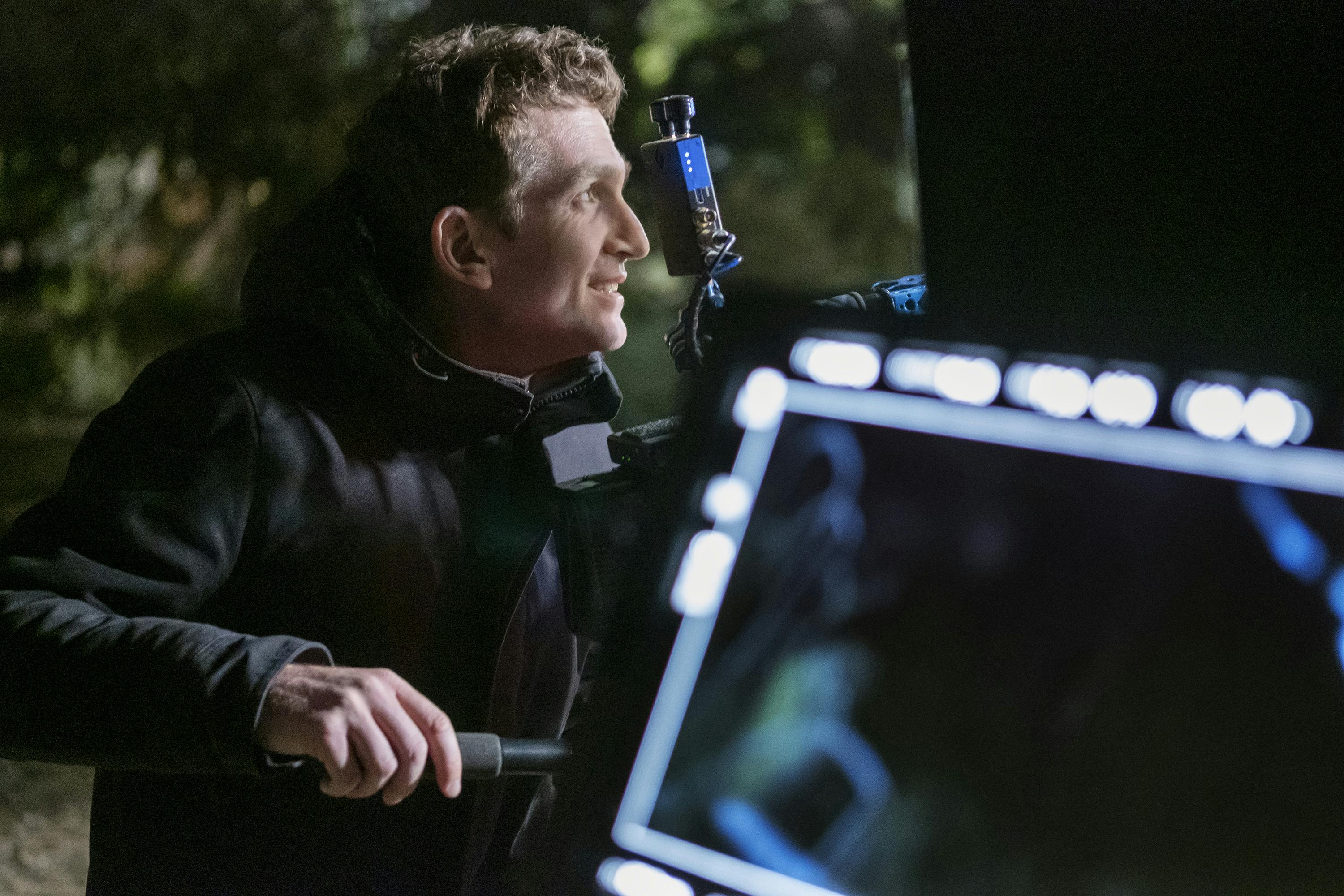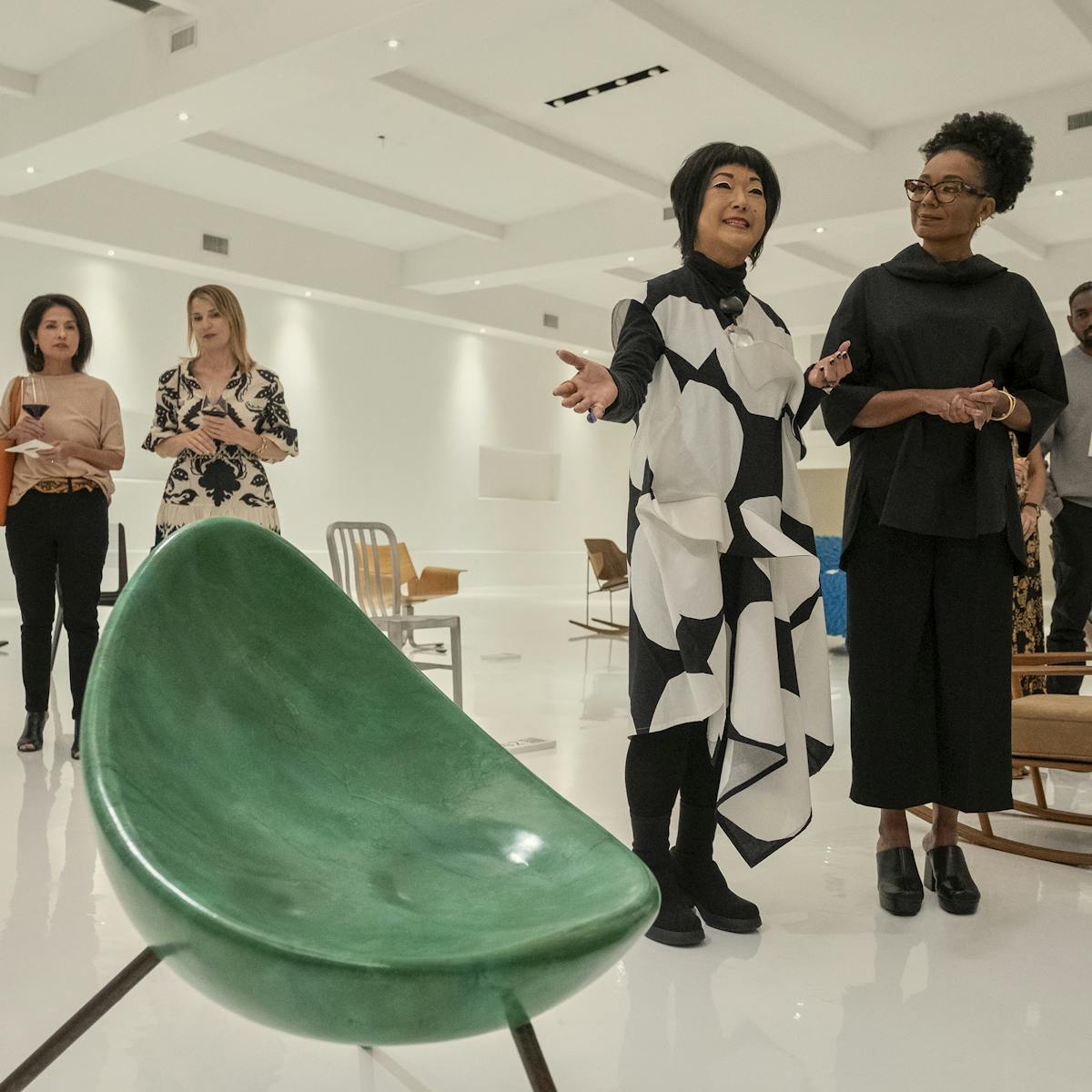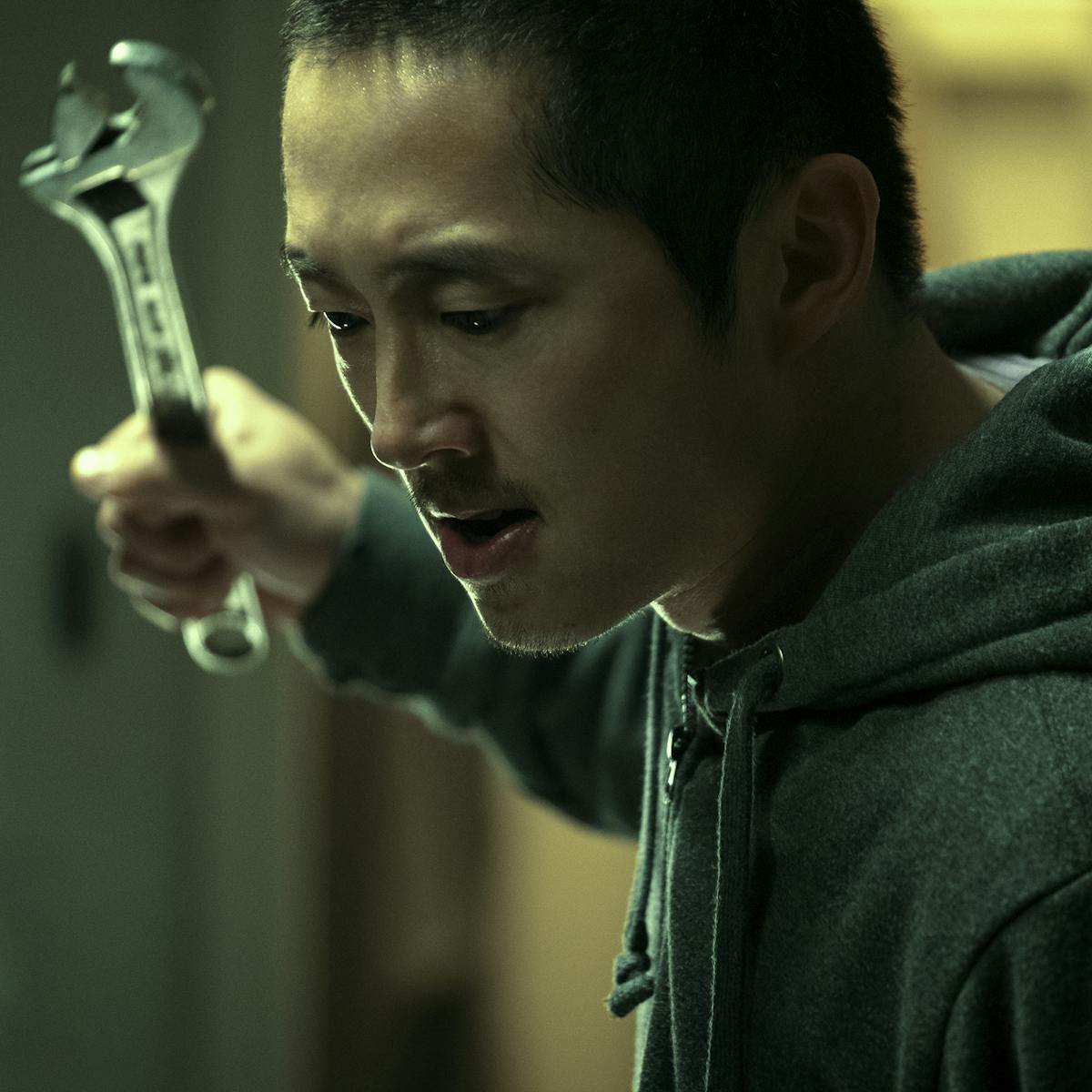Jake Schreier captures the full gamut of emotion as executive producer and one of the now Emmy-nominated directors of Lee Sung Jin’s existential masterpiece.
It only made sense for Jake Schreier to executive produce and direct existential road rage drama BEEF. As a longtime friend of creator and showrunner Lee Sung Jin, also known as Sonny, Schreier “would’ve talked to Sonny about the show for hours on end whether I was working on it or not.”
To the beat of an angsty 90s soundtrack, BEEF pairs breathtaking performances from Ali Wong and Steven Yeun (both of whom earned Emmy nominations for their work) with stylishly specific worldbuilding to examine the debilitating ways in which rage and despair unravel its two lead characters’ lives. The range of experience Schreier has accrued over an almost 20-year career made him a prime candidate to help lead the genre-resistant project: He’s directed blockbuster star-studded features (Paper Towns, Robot & Frank, and Marvel’s upcoming Thunderbolts), offbeat comedy series (Shameless, Dave), and award-winning music videos for Haim, Chance the Rapper, and more.
The six episodes helmed by Schreier contain some of the most intense and artistic moments in the series, which earned an astounding 13 Emmy nominations, including for Outstanding Limited Series. Against the backdrop of a thousand-dollar chair exhibit, the series’ second episode explores how wealth and obligation plague both protagonists. The whirlwind Episode 6 closes with an explosive church basketball showdown set to Bush’s “Machinehead.” Episode 8 charts the origins of Amy’s demons, culminating in an argument between Amy and her husband George (played by the now Emmy-nominated Joseph Lee), which is fueled by language more colorful than the scene’s neutral, cashmere wardrobe.
Episode 9, “The Great Fabricator,” for which Schreier earned an Outstanding Directing Emmy nomination, raises the stakes: It opens with Amy’s daughter June missing and ends with a gruesome death, a botched heist, and a decimated mansion. The final scene returns Danny and Amy to how we first met them — engaged in a fear-addled car chase, this time to the surrealist sound of Björk’s “All Is Full of Love.”
Here, Schreier weighs in on working with such an exceptional team and walks us through his Emmy-nominated episode.

Jake Schreier, Ali Wong, and Steven Yeun
ON FIRST LEARNING ABOUT BEEF
Sonny’s a friend of mine and has been for many years. He had this very elaborate PowerPoint presentation that was the pitch. Sonny always has the most elaborate pitches for his shows: They’ve got graphs of the characters’ rises and falls and they have music that goes with each moment. The image at the end of the season was already in that initial PowerPoint presentation, so there was a lot of specificity to it. He’s pitched and written a lot of more sci-fi, out there, multiversal shows, and there was something that felt just really special and personal about this one that was exciting.
ON WHAT CHANGED FROM THE PITCH TO THE FINAL PRODUCT
I think what Sonny would say is that more people used to die. That was before there was a writers room, and, obviously, there was an incredible writers room for the show, and a ton of things changed in the route that it takes to get there. Sonny would probably say that some of the kind of broader swings got dialed back a little bit. I think [the change was] more refinement than anything dramatically different from what that initial pitch deck was.
=
ON GROWING HIS TOOLKIT FOR SUCH A PARTICULAR PRODUCTION
The thing that was clear from when Sonny and I first started talking about it is how much perspective was going to be an important part of the show. What’s interesting about the way he wrote it is that Amy and Danny really aren’t in a lot of scenes together until much later in the show; they kind of exist in their own separate worlds. And something that was really important about that is that they feel apart from their own world until they’re thrust together through the inciting incident when they meet each other.
So we talked a lot about this idea of — I’ve used it before and it’s not some fancy tool, it’s a very subtle thing — unbalanced coverage. The camera’s always closer to Amy and Danny than it is to whoever else they’re in the scene with, except for very key times when other characters become prospective characters. And they’re in graphs, so [Sonny and I] could really talk about what those moments are and when to balance it or imbalance it. We see that in Episode 1 when they’re at the door together because it should feel like the first time you’re seeing that shift.

Jake Schreier and Remy Holt
ON PAIRING THE NEEDLE DROPS WITH VISUALS
Most of them, with the exception of two, Sonny wrote in the script. [“The Reason” by] Hoobastank was found in the edit. And then, Laura Zempel, our incredible editor, and I got “Machinehead” in the basketball sequence in [Episode] 6. That was a very complicated thing to put together with the dialogue.
It’s not my episode, but I just remember the Hoobastank one because there were all kinds of different things that got tried out for that once it went away from the script. Watching The Sopranos and [the series’ creator] David Chase using all of this music from the 70s and the 90s, [we had] the idea that you could go back to the late 90s and early aughts for [BEEF] and it would feel classic. And also, that they would ride this line of great songs that maybe at first you think you should cringe at, then you’re like, It is actually pretty great — that line of what those [songs] were was a very delicate thing to find.
ON SUPPORTING HIS ACTORS THROUGH INTENSE, EMOTIONAL CONTENT
[In terms of the church scene in Episode 3,] Steven’s a very special actor, and he just won’t do anything false. He certainly could, if he needed to, cry on cue, if that was the move. We didn’t want to do that in that scene. I had really designed it. I was like, “This is going to be one shot. It’s going to be on Steven. I’m not going to push. I’m not going to do any camera moves because I don’t want him to feel locked into the timing.” He was excited because of the church; there were so many family connections. [Edwin actor] Justin Min’s brother Jason actually leads that praise band at a church in Pasadena, and they came to be the real praise band for it and brought their congregation. There were so many elements about it: Steven led praise band when he was younger.
So the conditions were right, and [Steven’s] like, “I can feel it, man. It’s going to be good.” We just said, “You take your time, we’ll turn around, we’ll get other coverage. This is such an important moment. We’ve all been waiting for it. We’re not going to force it.” Sometimes it’s just taking away a few of the constraints of production and the things you usually do, knowing that the most important thing is that [Steven] get there in that moment and that he has what he needs to feel supported for it.

Jake Schreier and Lee Sung Jin
ON THAT DEATH SCENE
It was really director of photography Larkin [Seiple’s] idea. We knew we needed Jordan to be the agent of her own destruction. In very early versions of the show, there was going to be a balcony at Jordan’s house; she would’ve fallen and impaled herself on the Tamago chair. But the chair didn’t end up being designed that way, so the idea of this kind of panic room — it can’t just be a gruesome death for the sake of it, and she has to play some part in it on a character level.
But then it was like, Okay, so if she’s going to be crushed by a panic room door, then that’s hard to show for a number of reasons. But also, it’s hard for there to be a real sense of finality in that. This idea [was] that you could show someone — it’s gross — get bisected by a door, but that you could do that by being on the reaction shots and then have the door actually close and just hear the sound.




